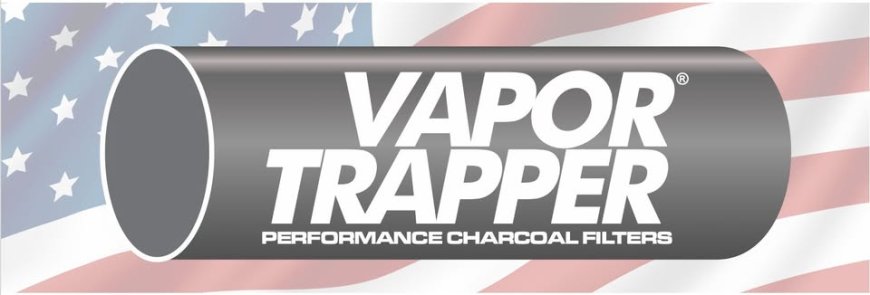How a Vapor Canister, Gas Tank Vent, and Charcoal Canister Help Eliminate Gasoline Odor in Garage

Introduction
Dealing with a persistent gasoline odor in garage spaces can be frustrating and concerning. Whether you’re storing your car, doing maintenance, or simply parking it overnight, the smell of gasoline should not be present. Often, the root of the problem lies within your car’s evaporative emissions control system — particularly the vapor canister, gas tank vent, or charcoal vapor canister. In this blog, we’ll break down how these parts work, why gasoline odors occur, and how you can fix or prevent them to eliminate gas smell in your garage.
Understanding the Vapor Canister
What Is a Vapor Canister?
A vapor canister, also known as an EVAP canister, is an essential part of the vehicle’s emission system. Its job is to trap fuel vapors before they escape into the atmosphere. When fuel sits in the tank, it evaporates and builds pressure. The vapor canister collects these vapors and stores them temporarily.
How It Helps Eliminate Gas Smell
When the engine starts, the system opens purge valves, allowing these stored vapors to be drawn into the engine and burned. This process not only reduces emissions but also helps eliminate gas smell that would otherwise seep into your garage and vehicle surroundings.
If your vapor canister is damaged, clogged, or malfunctioning, fuel vapors can leak and cause that familiar but unwelcome gasoline odor in garage spaces.
Role of the Gas Tank Vent
What Is a Gas Tank Vent?
The gas tank vent is a vital component that ensures air can enter and exit the fuel tank without creating a vacuum or pressure buildup. This vent is part of the same emission system that includes the vapor canister.
Why It Matters
A blocked or faulty gas tank vent can cause vapors to be improperly routed, leading to pressure issues and potentially forcing gasoline odors into the atmosphere. In worst-case scenarios, it can even cause fuel to overflow or the tank to collapse.
If you’re trying to eliminate gas smell, checking the gas tank vent for blockages or cracks should be one of your first steps.
What Is a Charcoal Vapor Canister?
How It Works
A charcoal vapor canister is filled with activated charcoal granules that absorb and store gasoline vapors. These are later purged and burned in the engine during operation. The charcoal inside has a high surface area and can absorb a significant amount of vapor.
Benefits Over Standard Canisters
Replacing a standard vapor canister with a charcoal vapor canister greatly improves efficiency. It’s particularly helpful when you’re dealing with a consistent gasoline odor in garage environments. The activated charcoal is more effective at trapping lingering vapors and can often solve smell problems when other components seem fine.
Helps Eliminate Gas Smell More Effectively
Whether your vehicle is older or newer, upgrading to a charcoal vapor canister can be a reliable way to eliminate gas smell long-term, especially if you store your car indoors or don’t drive frequently.
Common Reasons for Gasoline Odor in Garage
1. Leaking Fuel Lines or Connections
Fuel lines that are cracked, loose, or leaking are a frequent culprit for a gasoline odor in garage settings. While the vapor canister and gas tank vent control vapors, a leak allows raw fuel or fumes to escape directly.
2. Damaged Vapor Canister
A cracked or saturated vapor canister cannot contain vapors efficiently. Instead of directing them to the engine, it allows them to seep into the air, causing a strong gasoline odor in garage environments.
3. Blocked Gas Tank Vent
If the gas tank vent is obstructed, the pressure in the tank can build and cause vapors to escape elsewhere — often into the garage or vehicle cabin.
4. Old or Inefficient Charcoal Vapor Canister
Over time, even a charcoal vapor canister can become saturated. If it’s not replaced, it won’t eliminate gas smell efficiently and may even begin to release stored vapors.
How to Fix and Prevent the Odor
Step 1: Inspect the Vapor Canister
Look for cracks, external leaks, or signs of fuel saturation. If your vapor canister is faulty, replace it promptly to avoid worsening the gasoline odor in garage.
Step 2: Test the Gas Tank Vent
Remove any clogs or obstructions in the gas tank vent system. Also, check the vent valve or solenoid, as it may be stuck closed or open, both of which can cause problems.
Step 3: Replace With a Charcoal Vapor Canister
If the system is aging, swap in a charcoal vapor canister for more effective vapor management. It’s a small investment with significant benefits when trying to eliminate gas smell.
Step 4: Tighten Fuel Caps and Seals
Check that your gas cap fits snugly and seals properly. A loose cap allows vapors to escape and contributes to the gasoline odor in garage situations, especially after refueling.
When to See a Mechanic
If you’ve done these inspections and still smell fuel, it’s time for a professional diagnostic. Mechanics can use smoke tests to identify leaks in the vapor canister, gas tank vent, or fuel lines.
They can also test the purge valve functionality and assess if the charcoal vapor canister is saturated and needs replacement. Sometimes, even a small emission system leak can cause a persistent gasoline odor in garage, so don’t ignore it.
Preventative Maintenance Tips
- Replace your charcoal vapor canister every 50,000 to 100,000 miles
- Regularly inspect the gas tank vent for obstructions
- Don’t overfill the fuel tank, as this can flood the vapor canister
- Always check for fuel leaks or wet spots near the tank or lines
- Park in a ventilated area if possible to dissipate any minor vapors
Final Thoughts
The key to resolving a gasoline odor in garage is understanding how the vapor canister, gas tank vent, and charcoal vapor canister work together to manage and contain fuel vapors. When any of these parts fail, vapors are released into the air, making your garage smell like raw gasoline.
To eliminate gas smell, inspect these components regularly and replace them when needed. A properly working fuel vapor control system not only keeps your garage odor-free but also contributes to a cleaner environment and safer driving conditions.




































































![https //g.co/recover for help [1-866-719-1006]](https://newsquo.com/uploads/images/202506/image_430x256_684949454da3e.jpg)

























![[PATREON EXCLUSIVE] The Power of No: How to Say It, Mean It, and Lead with It](https://tpgblog.com/wp-content/uploads/2025/06/just-say-no.jpg?#)



















































